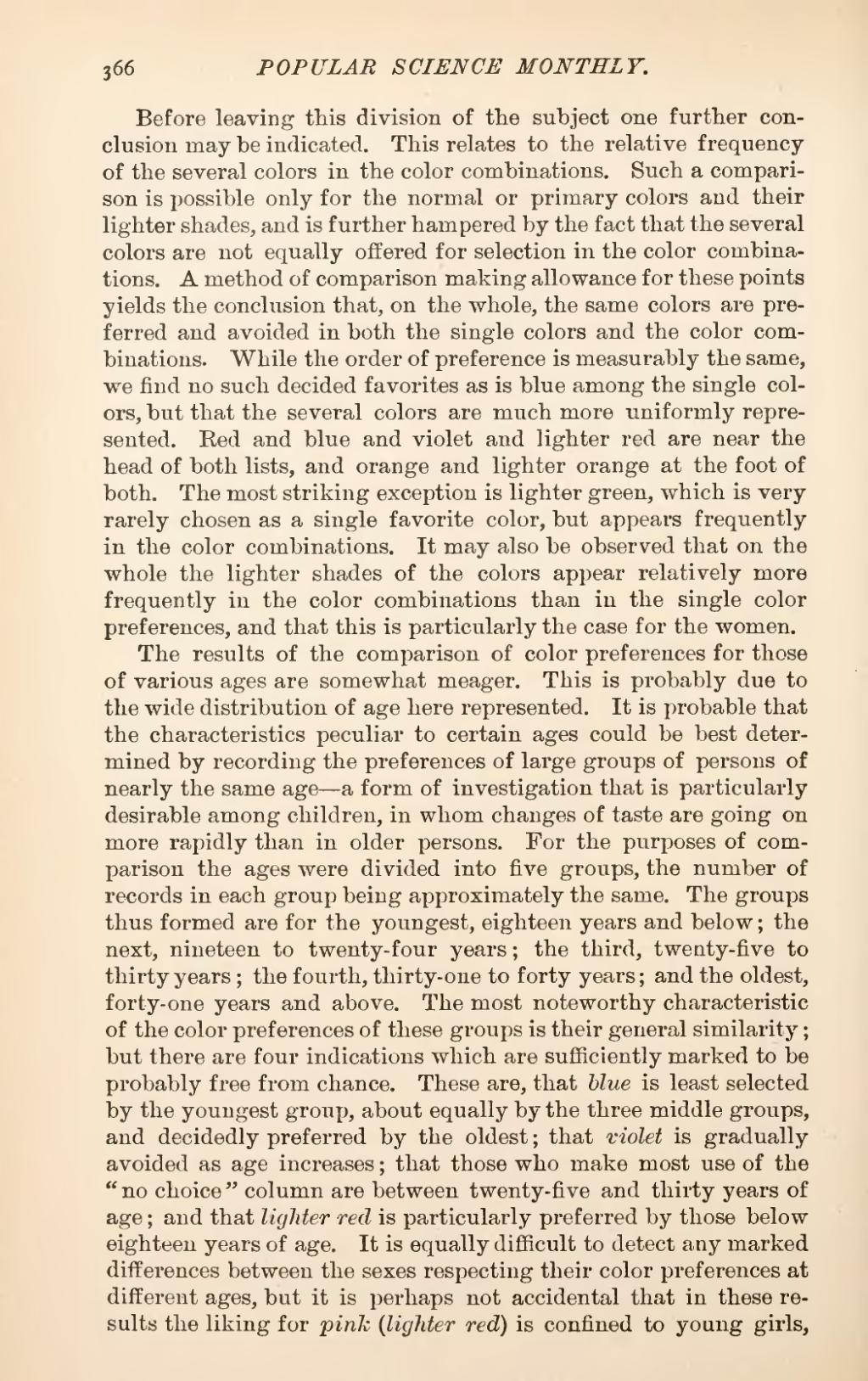Before leaving this division of the subject one further conclusion may be indicated. This relates to the relative frequency of the several colors in the color combinations. Such a comparison is possible only for the normal or primary colors and their lighter shades, and is further hampered by the fact that the several colors are not equally offered for selection in the color combinations. A method of comparison making allowance for these points yields the conclusion that, on the whole, the same colors are preferred and avoided in both the single colors and the color combinations. While the order of preference is measurably the same, we find no such decided favorites as is blue among the single colors, but that the several colors are much more uniformly represented. Red and blue and violet and lighter red are near the head of both lists, and orange and lighter orange at the foot of both. The most striking exception is lighter green, which is very rarely chosen as a single favorite color, but appears frequently in the color combinations. It may also be observed that on the whole the lighter shades of the colors appear relatively more frequently in the color combinations than in the single color preferences, and that this is particularly the case for the women.
The results of the comparison of color preferences for those of various ages are somewhat meager. This is probably due to the wide distribution of age here represented. It is probable that the characteristics peculiar to certain ages could be best determined by recording the preferences of large groups of persons of nearly the same age—a form of investigation that is particularly desirable among children, in whom changes of taste are going on more rapidly than in older persons. For the purposes of comparison the ages were divided into five groups, the number of records in each group being approximately the same. The groups thus formed are for the youngest, eighteen years and below; the next, nineteen to twenty-four years; the third, twenty-five to thirty years; the fourth, thirty-one to forty years; and the oldest, forty-one years and above. The most noteworthy characteristic of the color preferences of these groups is their general similarity; but there are four indications which are sufficiently marked to be probably free from chance. These are, that blue is least selected by the youngest group, about equally by the three middle groups, and decidedly preferred by the oldest; that violet is gradually avoided as age increases; that those who make most use of the "no choice" column are between twenty-five and thirty years of age; and that lighter red is particularly preferred by those below eighteen years of age. It is equally difficult to detect any marked differences between the sexes respecting their color preferences at different ages, but it is perhaps not accidental that in these results the liking for pink (lighter red) is confined to young girls,
